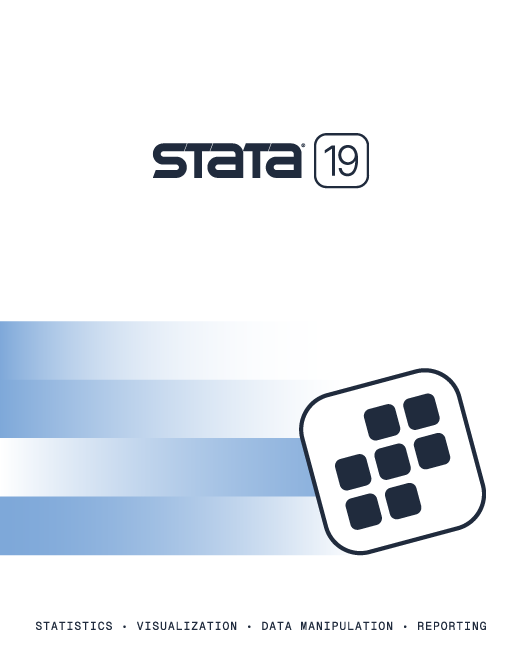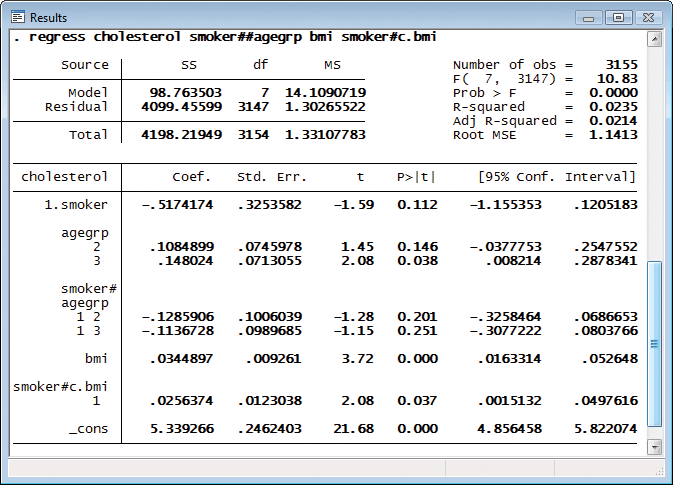

Updates to factor variables were introduced in Stata 11.
|
| Order |
Stata now handles factor (categorical) variables elegantly. You can now prefix a variable with i. to specify indicators for each level (category) of the variable. You can put a # between two variables to create an interaction–indicators for each combination of the categories of the variables. You can put ## instead to specify a full factorial of the variables—main effects for each variable and an interaction. If you want to interact a continuous variable with a factor variable, just prefix the continuous variable with c.. You can specify up to eight-way interactions.
We run a linear regression of cholesterol level on a full factorial of age group and whether the person smokes along with a continuous body mass index (bmi) and its interaction with whether the person smokes.

We could have used parenthesis binding, to type the same model more briefly:
. regress cholesterol smoker##(agegrp c.bmi)
Base levels can be changed on the fly: i.agegrp uses the default base level of 1, whereas b3.agegrp makes 3 the base level.
The level indicator variables are not created in your dataset, saving lots of space.
Factor variables are integrated deeply into Stata’s processing of variable lists, providing a consistent way of interacting with both estimation and postestimation commands.
For a complete list of new general statistics features in Stata 11, click here.
Learn
Free webinars
NetCourses
Classroom and web training
Organizational training
Video tutorials
Third-party courses
Web resources
Teaching with Stata
© Copyright 1996–2025 StataCorp LLC. All rights reserved.
×
We use cookies to ensure that we give you the best experience on our website—to enhance site navigation, to analyze usage, and to assist in our marketing efforts. By continuing to use our site, you consent to the storing of cookies on your device and agree to delivery of content, including web fonts and JavaScript, from third party web services.
Cookie Settings
Last updated: 16 November 2022
StataCorp LLC (StataCorp) strives to provide our users with exceptional products and services. To do so, we must collect personal information from you. This information is necessary to conduct business with our existing and potential customers. We collect and use this information only where we may legally do so. This policy explains what personal information we collect, how we use it, and what rights you have to that information.
These cookies are essential for our website to function and do not store any personally identifiable information. These cookies cannot be disabled.
This website uses cookies to provide you with a better user experience. A cookie is a small piece of data our website stores on a site visitor's hard drive and accesses each time you visit so we can improve your access to our site, better understand how you use our site, and serve you content that may be of interest to you. For instance, we store a cookie when you log in to our shopping cart so that we can maintain your shopping cart should you not complete checkout. These cookies do not directly store your personal information, but they do support the ability to uniquely identify your internet browser and device.
Please note: Clearing your browser cookies at any time will undo preferences saved here. The option selected here will apply only to the device you are currently using.